10 Incredible temples in India with Rich History and Spectacular Aura: A Journey Beyond Spirituality
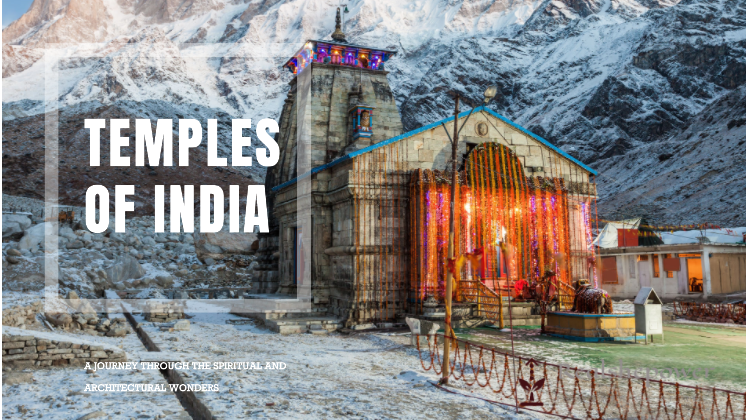

India, the cradle of civilizations, has long been celebrated as the land of spiritual enlightenment. Its temples, time-worn yet enduring, stand as grand epitomes of ancient architectural splendor and spiritual profundity. These temples, each enveloped in legends, mysteries, and awe-inspiring aura, promise every visitor a journey transcending the mere physical realm. Here’s a handpicked list of 10 such incredible temples in India that beckon every soul.
Table of Contents
1. Konark Sun Temple, Odisha: A Timeless Odyssey of Art and Faith
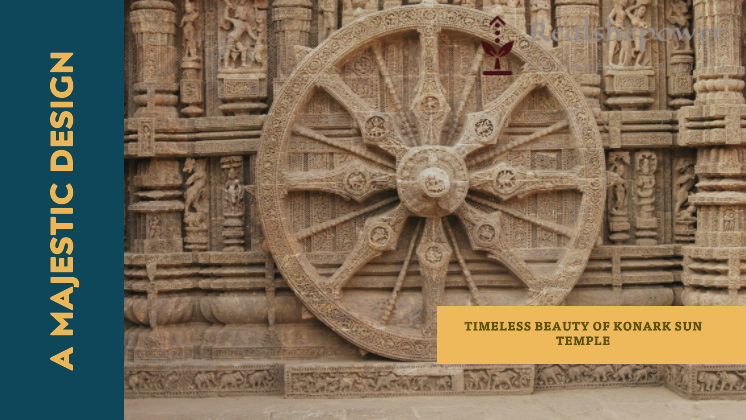
Nestled along the coastline of Odisha, the Konark Sun Temple stands as an epitome of ancient Indian architectural grandeur and timeless spirituality. A monumental testimony to India’s artistic legacy, this 13th-century marvel casts an indelible impression on the hearts and minds of every onlooker. Here’s a deep dive into this magnificent structure, famously referred to as the “Black Pagoda”.
Historical Significance:
Built in the mid-13th century by King Narasimhadeva I of the Eastern Ganga Dynasty, the temple was conceived as a colossal chariot for the Sun God, Surya. Dedicated to this solar deity, the temple was designed to serve both as a majestic place of worship and a gigantic sundial, marking the passage of time.
Architectural Splendor:
The Konark Sun Temple is a true marvel of ancient architecture. Its design replicates a grand chariot with 24 intricately carved wheels, pulled by a team of seven majestic horses. Each of these wheels is not just ornamental but also functional, serving as a sundial, a testament to the advanced scientific knowledge of the era.
Constructed from Khondalite rocks, the main sanctum (vimana) once stood tall at around 229 feet but now lies in ruins. The remaining structure, including the Jagamohana (assembly hall) and the Nata Mandira (dance hall), stands as a testament to the rich legacy of ancient Indian art and architecture.
Sculptural Masterpieces:
The temple’s walls are adorned with intricately detailed carvings and sculptures, narrating tales from the Mahabharata, Ramayana, and other ancient scriptures. Apart from the mythological depictions, the carvings also provide a unique window into the daily life and cultural richness of the time.
Mysteries and Legends:
The temple is surrounded by several legends and mysteries. One such tale speaks of the temple’s main magnetized tower that caused ships to deviate from their course. It’s believed that the lodestone placed at the temple’s top was removed by the early European sailors to protect their trade route.
Festivals and Celebrations:
Every year, thousands gather at Konark for the annual dance festival celebrating the rich cultural and artistic heritage of Odisha. Dancers from across the country converge to perform against the spectacular backdrop of the temple, paying tribute to its enduring legacy.
Conservation Efforts:
Recognized as a UNESCO World Heritage Site in 1984, the Konark Sun Temple, though partly in ruins, has been the focus of numerous conservation efforts to ensure its timeless beauty and spiritual essence are preserved for future generations.
Key Highlight: Every wheel of the chariot serves as a sundial. The precision with which it was crafted in the 13th century still boggles the mind!
2. Khajuraho Group of Monuments, Madhya Pradesh: A Symphony in Stone
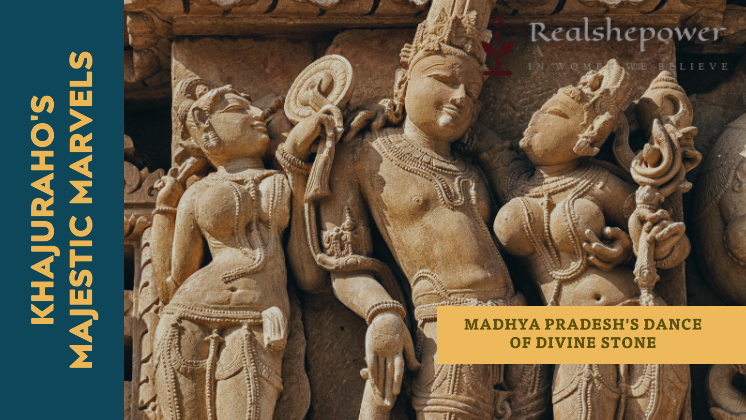
Hidden amidst the dense forests of Madhya Pradesh, the temples of Khajuraho stand as a timeless testament to India’s golden era of artistry, spirituality, and sensuous expression. As the sun pierces through the lush canopy of trees, it casts a warm glow on the sandstone walls of these ancient structures, bringing to life stories carved in stone, centuries ago.
Historical Backdrop:
The Khajuraho Group of Monuments dates back to the Chandela dynasty, which rose to prominence between the 10th and 12th centuries. This dynasty, under its visionary rulers, commissioned the construction of these temples, which were originally a group of 85, though only about 20 now stand in varying states of preservation. Khajuraho was believed to be the religious capital of the Chandelas.
Architectural Grandeur:
The temples of Khajuraho are a blend of robust Nagara-style architecture and delicate, intricate carvings. Every inch of the sandstone facades is adorned with sculptures that depict various facets of life, from mundane day-to-day activities to spiritual teachings and, most famously, explicit eroticism. These temples are divided into three groups based on their geographical orientation: Western, Eastern, and Southern.
Symbolism and Artistry:
Beyond their evident architectural brilliance, the temples have long been the subject of academic curiosity due to their erotic sculptures. These sensual carvings symbolize the celebration of love, life, and divinity, resonating with certain tantric practices and principles. However, they form only a fraction of the vast array of sculptures; other carvings depict musicians, dancers, deities, and scenes of war, providing a panoramic view of medieval Indian society.
Festivals and Celebrations:
The annual Khajuraho Dance Festival is a significant event that celebrates the classical dance forms of India amidst this historical backdrop. For a week, the temple complex echoes with the rhythmic beats of classical dances, creating an ethereal atmosphere where the past meets the present in a harmonious confluence.
Preservation and World Recognition:
Recognizing its outstanding universal value, UNESCO inscribed the Khajuraho Group of Monuments as a World Heritage Site in 1986. This recognition has bolstered conservation efforts, ensuring that future generations can witness and be inspired by the legacy of the Chandelas.
In essence, the Khajuraho temples are more than just stone structures; they are the embodiment of India’s rich cultural tapestry and artistic prowess. A visit to this enigmatic site offers a journey through time, revealing tales of passion, devotion, and unmatched craftsmanship. In the stillness of the night, as the moonlight bathes the temples, one can almost hear the whispers of ancient artisans sharing their timeless tales.
Key Highlight: These temples are renowned worldwide for their erotic sculptures, symbolizing the divine union and moksha.
3. Meenakshi Amman Temple, Tamil Nadu: A Revered Emblem of Dravidian Grandeur
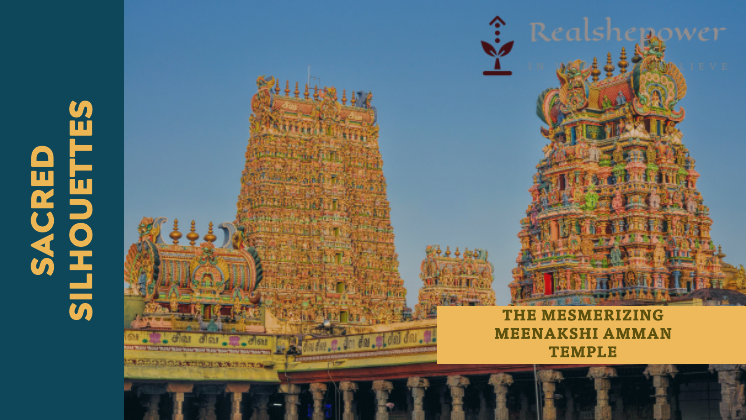
Sprawling across the historic cityscape of Madurai, one of the oldest cities in India, the Meenakshi Amman Temple stands as an epitome of timeless architectural magnificence and spiritual significance. Dedicated primarily to Goddess Parvati, referred to as Meenakshi, and her consort, Lord Shiva (Sundareswarar), this temple is not just a pilgrimage site but a celebration of human achievement in architectural mastery.
Origins:
The legend behind this temple is as enchanting as its stately towers. It’s believed that Meenakshi was born with three breasts and a prophecy foretold that the third breast would disappear when she met her future husband. As fate would have it, she met Lord Shiva, and they were destined to marry. Their celestial wedding is celebrated annually as the ‘Chithirai Festival’, drawing thousands of devotees and tourists.
Architectural Splendor:
The Meenakshi Amman Temple is a treasure trove of Dravidian architectural style. The temple complex sprawls over 45 acres, with 14 magnificent towers or ‘Gopurams’. These Gopurams are ornately decorated with a pantheon of deities, mythical animals, and monstrous demons. The tallest of these stretches to about 170 feet, painting the skyline of Madurai.
The heart of the temple houses the sacred pond, ‘Porthamarai Kulam’ (Golden Lotus Pond), where devotees often sit in contemplation or offer their prayers.
Artistry Inside Out:
As you walk through the corridors, the walls narrate tales from the past—epics from Indian scriptures, murals of divine figures, and more. The ‘Thousand Pillar Hall’ is an architectural wonder, where each pillar is uniquely carved, producing a different musical note when struck. It’s a harmonious blend of art and acoustics.
Festivals and Celebrations:
Beyond its architectural grandeur, the temple is a vibrant hub of cultural festivities. The annual ‘Chithirai Festival’ re-enacts the divine wedding of Meenakshi and Sundareswarar, turning the entire city into a grand celebratory realm. The streets come alive with processions, traditional music, and dance.
Economic and Cultural Significance:
The temple isn’t just a spiritual haven; it’s a significant contributor to Madurai’s economy. Thousands flock daily, making it one of the most visited temples in the country. Local artisans and vendors thrive, selling religious paraphernalia, traditional South Indian attire, and intricate handicrafts.
Key Highlight: The temple houses 14 magnificent towers (Gopurams) bedecked with thousands of statues.
4. Badrinath Temple, Uttarakhand: A Himalayan Spiritual Odyssey
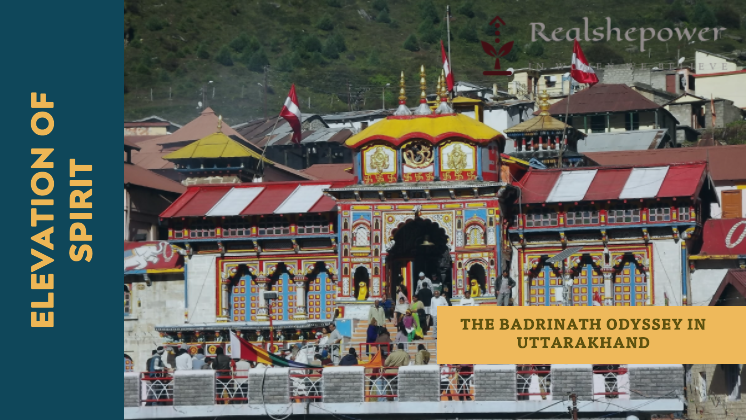
Nestled amidst the towering snow-capped peaks of the majestic Himalayas, the Badrinath Temple is more than just a pilgrimage site; it’s an embodiment of age-old devotion and spirituality. Located in the Chamoli district of Uttarakhand, India, this sacred temple is one of the four ‘Char Dhams’ that devout Hindus aspire to visit in their lifetime.
Historical Echoes:
The temple’s history is steeped in legends and myths. It is believed to be the sacred ground where Lord Vishnu, in his avatar as Badrinath, meditated under the Badri tree for the welfare of mankind. The sage Adi Shankaracharya, in the 8th century, discovered a black stone image of Lord Vishnu, now enshrined within the temple, adding further sanctity to this already revered spot.
Architectural Splendor
Flaunting a quintessential North Indian temple architecture, the Badrinath Temple stands tall with its brightly painted façade and intricate carvings. Its sanctum sanctorum houses the central deity, Lord Badrinath, intricately carved and adorned. The temple complex, with its hot water pools, the Tapt Kund and Surya Kund, and the Neelkanth peak as its backdrop, paints a picturesque panorama that’s both spiritually and aesthetically uplifting.
Rituals & Traditions:
Each day at the temple begins with the melodious sounds of bells and chants, as the chief priest performs the ‘Abhishekam’ to the deity. Pilgrims often take a holy dip in the Tapt Kund, a hot spring, before entering the temple, as it’s believed to cleanse the soul and body.
Surrounding Wonders:
Beyond the spiritual realm, the Badrinath Temple is a gateway to some of the Himalayas’ most mesmerizing landscapes. The Valley of Flowers, Hemkund Sahib, and the Mana village (the last Indian village before the Tibetan border) are just a few gems that await exploration. The Alaknanda River’s thundering currents, cascading waterfalls, and lush meadows make this pilgrimage a holistic experience of devotion and nature.
Final Thoughts:
Visiting the Badrinath Temple is more than just ticking off a pilgrimage site from one’s list. It’s a soulful journey, a communion with the divine amidst nature’s unparalleled splendor. Whether it’s the meditative chants that echo through the valleys, the pure mountain air that rejuvenates the spirit, or the profound sense of peace that envelops every visitor, the Badrinath Temple experience is truly transcendental. It’s not just a journey of miles, but of lifetimes, memories, and spiritual quests.
Key Highlight: The Tapt Kund, a hot spring nearby, is believed to possess therapeutic properties.
5. Virupaksha Temple, Karnataka: A Portal to Timeless Divinity
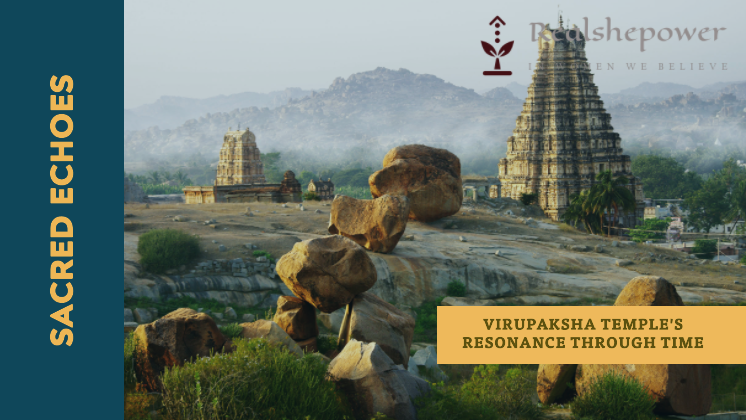
Karnataka, a state steeped in history and culture, cradles within its bosom the ancient town of Hampi, a UNESCO World Heritage Site. And amidst the ruins and remnants of a bygone era, the Virupaksha Temple stands tall, not just in its architectural splendor, but as a beacon of unfading devotion and time-honored traditions.
Origins and History:
The origins of Virupaksha Temple can be traced back to the 7th century AD, making it one of the oldest functioning temples in India. Although the Vijayanagara Empire, in its zenith during the 14th to the 16th centuries, is credited for most of the grandeur we witness today, the temple’s existence predates the empire itself. Over the centuries, various rulers and kings expanded and enhanced the temple, adding intricate corridors, towering gateways, and elaborate halls.
Architectural Marvel:
The temple is a splendid specimen of Dravidian architecture. Its towering gopuram (gateway tower) is a sight to behold, drawing the eyes upwards in awe. The main sanctum is dedicated to Lord Virupaksha, a form of Lord Shiva, while there are smaller shrines honoring other deities.
One of the most intriguing features of the temple is the presence of a pinhole camera effect, projecting the inverted image of the main tower onto a wall in one of the inner sanctuaries. This optical wonder stands as a testament to the advanced understanding of science and art by ancient Indian architects.
Spiritual Significance:
Virupaksha Temple is not just an architectural wonder; it is the spiritual heart of Hampi. The temple has witnessed the ebb and flow of empires, the grandeur of royal coronations, and the solemnity of spiritual rituals. Pilgrims from all over the country, and even from overseas, visit this temple to seek blessings and immerse themselves in its serene ambiance.
The temple’s annual chariot festival is a significant event, attracting devotees in large numbers, and transforming the temple town into a vibrant and bustling spiritual hub.
The Surroundings:
The temple is set against the backdrop of the Tungabhadra River on one side and the boulder-strewn landscape of Hampi on the other. The juxtaposition of the temple’s structured architecture with the raw, untamed beauty of its surroundings offers a visual treat to visitors. The river ghats adjacent to the temple are where pilgrims take a holy dip, believing in the purifying properties of the water.
In Conclusion:
Visiting the Virupaksha Temple is like stepping into a time machine. The air is thick with tales of yore, the stones whisper ancient secrets, and the entire ambiance transports one to a world where the divine seamlessly blends with the mortal. Whether you’re a history buff, an architecture enthusiast, or a spiritual seeker, Virupaksha Temple promises an experience that etches itself onto the canvas of your memory, urging you to revisit, time and again.
Key Highlight: The temple complex houses a uniquely inverted shadow of its main tower, a spectacle that leaves viewers spellbound.
6. Golden Temple (Harmandir Sahib), Punjab: A Lustrous Beacon of Faith and Unity
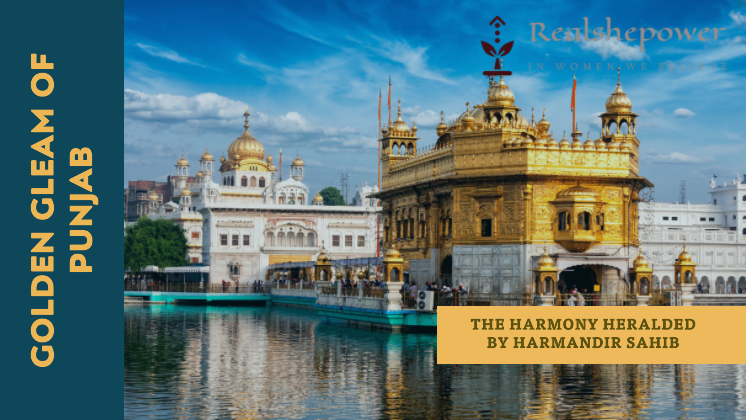
Nestled in the heart of Amritsar, Punjab, the Golden Temple, officially known as Harmandir Sahib, is not just a place of worship but a testament to the indomitable spirit, unity, and rich heritage of Sikhism. The gilded sanctum, shimmering under the sun, set amidst the tranquil waters of the Amrit Sarovar (the pool of nectar), stands as a beacon of hope and solace for millions worldwide.
Historical Significance:
Founded in 1577 by the fourth Sikh guru, Guru Ram Das Ji, the foundation stone of the temple was uniquely laid by a Muslim saint, Mian Mir, exemplifying the temple’s core ethos of universal brotherhood. The temple was completed in 1604 under the guidance of Guru Arjan Dev Ji, the fifth Sikh guru.
Architectural Marvel:
A blend of Hindu and Islamic architectural styles, the Golden Temple is a two-storey marble structure with an imposing dome of pure gold. This dome, adorned with intricate patterns, reflects the temple’s name and its radiant persona. The interiors of the sanctum are decorated with fresco work and embossed gold and silver panels, embodying Sikhism’s rich artistic tradition.
Amrit Sarovar:
The temple complex is surrounded by Amrit Sarovar, whose waters are believed to have curative properties. Devotees, irrespective of their faith, take a holy dip in these waters, seeking spiritual and physical healing. This serene pond is also where the night-time reflection of the gleaming temple creates a magical sight.
Langar – The Community Kitchen:
One of the most heartwarming aspects of the Golden Temple is its langar (community kitchen). Serving approximately 100,000 meals daily, this kitchen embodies the Sikh principle of selfless service. Volunteers, including visitors, help in cooking and serving, making it one of the world’s largest community kitchens.
Guru Granth Sahib Ji:
At the heart of the temple is the Guru Granth Sahib Ji, the central religious scripture of Sikhism. Hymns from this scripture are continuously recited, providing a soothing backdrop to the temple’s serene ambiance.
Jallianwala Bagh Proximity:
A stone’s throw away from the Golden Temple is Jallianwala Bagh, a poignant reminder of India’s freedom struggle and the sacrifices made. The close proximity of these two significant sites amplifies the spiritual and historical significance of the area.
Conclusion:
The Golden Temple is more than just a place of worship. It’s a place where spirituality meets humanity, where faith transcends boundaries, and where every corner echoes tales of devotion, sacrifice, and unity. Whether it’s the mesmerizing kirtans (hymns) that resonate in the air, the selfless service at the langar, or the glint of the golden dome under the moonlight, the Harmandir Sahib offers an experience that touches the soul and lingers in the heart forever.
Key Highlight: The temple’s reflection in the Amrit Sarovar (pool of nectar) at dawn and dusk is ethereal.
7. Jagannath Temple, Odisha: A Mélange of Faith, Festivity, and Ancient Architecture
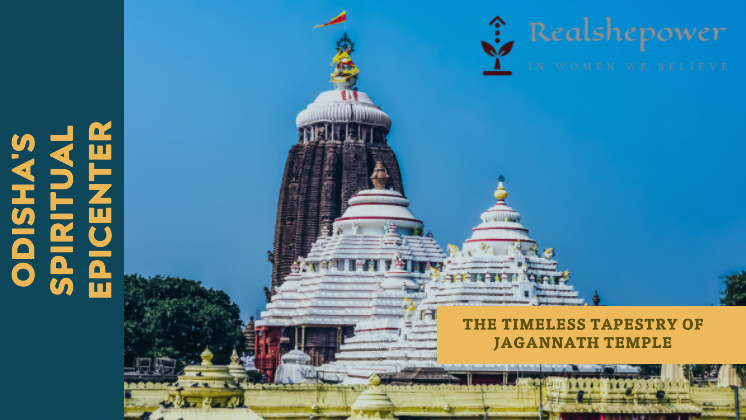
Nestled in the sacred town of Puri in Odisha, the Jagannath Temple stands as an illustrious testament to India’s rich cultural and spiritual heritage. It is not just a mere structure of stone and mortar, but an embodiment of timeless devotion, centuries-old traditions, and intricate architectural marvels.
Historical Significance:
Dating back to the 12th century, the Jagannath Temple is a product of the Ganga dynasty’s artistic prowess. Legend has it that King Indradyumna commissioned the temple to enshrine the divine log of wood that manifested as Lord Jagannath. Over centuries, the temple not only withstood the test of time but also thrived as a beacon of spirituality and devotion.
Architectural Splendor:
Sprawling over an area of 400,000 square feet, the temple complex is surrounded by a high fortified wall, the Meghanada Pacheri. Dominating the skyline is the temple’s magnificent spire, soaring to a height of 65 meters. Each inch of the temple resonates with intricate carvings and sculptures, detailing stories from ancient scriptures and the life of Lord Krishna.
Deities and Sanctums:
The temple is primarily dedicated to Lord Jagannath, a form of Lord Vishnu. Alongside Him, the sanctum sanctorum houses the idols of His brother, Lord Balabhadra, and sister, Goddess Subhadra. These deities are not sculpted in the traditional manner; they are made of wood and are replaced in a secretive ritual every twelve years, known as the ‘Navakalevara’.
Rath Yatra – The Grand Chariot Festival:
The temple’s global claim to fame is the Rath Yatra or Chariot Festival. Held annually, it witnesses the deities being placed on grand chariots that are pulled by thousands of devotees through the streets of Puri. This festival symbolizes Lord Jagannath’s journey to his aunt’s house and back. The sight of massive, colorfully decorated chariots, fervent chants of “Jai Jagannath!”, and the sheer devotion of the attendees make it an unforgettable spectacle.
Maha Prasad – A Divine Culinary Experience:
The temple’s kitchen deserves a special mention. Touted as one of the largest temple kitchens in the world, it daily prepares ‘Maha Prasad’, a divine offering of 56 dishes, to feed the deity and thousands of devotees. Cooked in earthen pots over wood fires, the prasad is a delightful experience for the taste buds and the soul.
Mysteries and Legends:
Many mysteries surround the temple. One such enigma is the Sudarshan Chakra atop the temple. Despite its massive size, it looks the same from every direction. Another legend states that the flag atop the temple always flaps in the opposite direction of the wind.
In essence, the Jagannath Temple is not just a religious edifice. It is a living testament to the faith of millions, the artistic genius of ancient India, and the spiritual aura that envelops the land of Odisha. A visit here is not just about offering prayers; it’s about experiencing an age-old saga of devotion, art, and mystery.
Key Highlight: The temple’s kitchen is believed to be the largest in the world, serving lakhs of devotees daily.
8. Somnath Temple, Gujarat: A Testament to Timeless Devotion
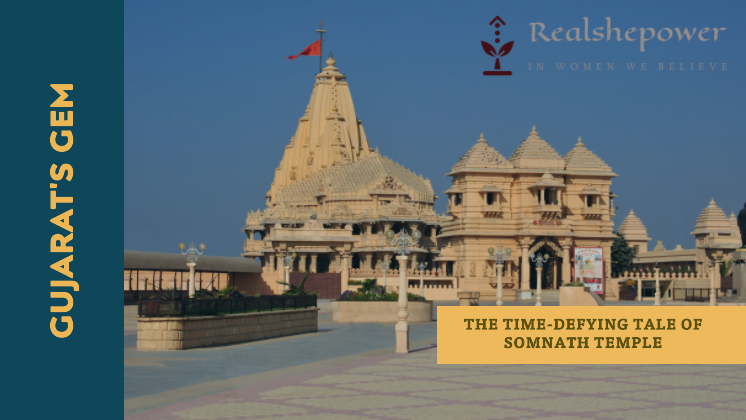
Gujarat’s coastal town of Prabhas Patan, near Veraval, is home to the legendary Somnath Temple, an edifice that stands as a testimony to India’s timeless architectural and spiritual legacy. This temple, a jewel on the Arabian Sea’s shores, has withstood the tests of time, nature, and invasions, continually arising from its ashes, grander than before.
Historical Backdrop:
Somnath, often referred to as the ‘Eternal Shrine’, has a rich tapestry of legends and historical events associated with it. It’s believed to have been first constructed in gold by Moon God, followed by a silver version by Sun God, and later in wood by Lord Krishna. The current structure, however, dates back to the Chalukya style of Hindu temple architecture.
The temple has witnessed several invasions, with its wealth and grandeur tempting many foreign rulers. Most notoriously, it was raided numerous times by Mahmud of Ghazni. Yet, the temple’s spirit remained undeterred. Post-independence, under the vision of then Home Minister Sardar Vallabhbhai Patel, the temple was reconstructed to reclaim its past glory.
Architectural Marvel:
The Somnath Temple, dedicated to Lord Shiva, houses one of the twelve Jyotirlingas. The imposing shikhar (spire) of the temple, the intricately carved pillars, and the sanctum sanctorum radiate an aura of serenity and divinity.
The temple’s design allows a direct view of the Arabian Sea from its sanctum, symbolizing the eternity of Lord Shiva. The “Baanka” (the zero point) on its premises is where the first ray of light falls, marking the land’s end and the sea’s beginning.
Cultural Significance:
Somnath isn’t just an architectural wonder; it’s an embodiment of the undying faith of millions. Despite the adversities, devotees have flocked to this sacred space for centuries, seeking blessings and witnessing the majestic Aarti against the backdrop of crashing sea waves.
Festivals and Celebrations:
The temple comes alive, especially during Maha Shivaratri, attracting pilgrims and tourists from all over. The vibrant festivities, the soul-stirring bhajans, and the elaborate rituals make it an experience one should not miss.
How to Reach:
Somnath is well-connected by road, rail, and air. The nearest airport is Diu, about 63 km away. The temple town also has its railway station.
Stay and Facilities:
Several dharamshalas, guesthouses, and hotels of varying budgets are available for pilgrims and tourists. The temple trust also offers accommodation facilities.
In Conclusion:
Somnath Temple is more than just a place of worship; it’s a living testament to the indomitable spirit of devotion and India’s rich spiritual heritage. It offers a serene blend of spirituality and scenic beauty, making it a must-visit for anyone looking to delve deep into India’s soul.
Key Highlight: The temple’s timeless resilience against invasions and natural calamities.
9. Brihadeeswarar Temple, Tamil Nadu: An Architectural Marvel of the Chola Dynasty
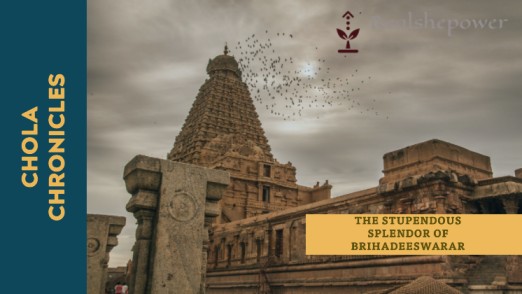
The Brihadeeswarar Temple, also popularly known as the Big Temple, stands as a testament to the architectural mastery and cultural prominence of the Chola Dynasty. Located in the historic city of Thanjavur, Tamil Nadu, this temple is not only a spiritual center but also an epitome of Indian architectural evolution.
Historical Significance:
Commissioned by the great Chola emperor Raja Raja Chola I in 1010 AD, the temple celebrates its millennium with grandeur and reverence. Its construction is a testament to the dynasty’s wealth, artistic expertise, and dedication to the Shaivism tradition. The temple’s inscriptions offer detailed accounts of the artists employed, their daily wages, and the various endowments made to the temple, providing a snapshot of the socio-economic structure of that era.
Architectural Splendor:
The Vimana (temple tower) of the Brihadeeswarar Temple is amongst the tallest in the world, standing at about 66 meters (216 feet). This towering giant is carved from a single granite block, weighing around 80 tons, showcasing the remarkable engineering skills of ancient India.
The temple complex is a harmonious interplay of spaces with meticulously designed sculptures, frescoes, and murals that depict various episodes from Indian epics and the life and times of the Chola Dynasty. The Nandi (sacred bull) statue at the entrance, carved out of a single rock, is one of the largest of its kind in India.
Cosmic Phenomenon:
One of the most intriguing aspects of the temple is its relationship with celestial bodies. At noon, the temple casts no shadow on the ground, a phenomenon that has baffled and awed many. This interplay of sunlight with the temple structure highlights the advanced astronomical knowledge of the temple’s architects.
Cultural Hub:
The temple precincts have continuously been a hub for cultural events. The annual dance festival held within the temple complex showcases the traditional dance forms of Bharatanatyam, bringing together renowned artists from across the country. The temple’s rich acoustics are a boon for Carnatic music concerts, making every musical note resonate with divinity.
UNESCO World Heritage Site:
Recognizing its unparalleled architectural and cultural significance, UNESCO declared the Brihadeeswarar Temple as a World Heritage Site in 1987. It is part of the “Great Living Chola Temples” UNESCO World Heritage site, which also includes the temples of Gangaikonda Cholapuram and Airavatesvara.
A Spiritual Journey:
While the architectural grandeur of the Brihadeeswarar Temple is palpable, the spiritual energy within its walls is equally compelling. Devotees and tourists alike feel a deep sense of peace and connection upon entering the temple. The aura of devotion, amplified by chants and rituals that have remained unchanged for a millennium, envelops every visitor, promising a profound spiritual experience.
In conclusion, the Brihadeeswarar Temple is more than just a structure of stone and mortar. It stands as a beacon of India’s glorious past, showcasing the zenith of Chola artistry, devotion, and engineering genius. A visit here is not just about witnessing an architectural wonder; it’s about experiencing a slice of living history and spirituality that resonates deeply within.
Key Highlight: The temple’s shadow never falls on the ground at noon, a cosmic dance between the Sun and the temple.
10. Kedarnath Temple, Uttarakhand: A Spiritual Odyssey Amidst the Himalayas
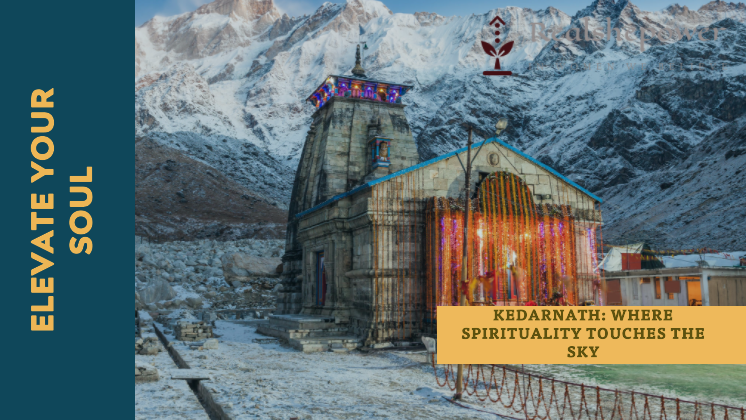
Tucked away amidst the majestic snow-capped peaks of the Indian Himalayas lies the ancient and revered Kedarnath Temple. This temple, dedicated to Lord Shiva, stands tall not just as a testament to undying faith but also as a marvel of architecture in a challenging terrain.
Geographical Marvel:
Situated at an altitude of about 3,583 meters (11,755 ft) above sea level, Kedarnath is nestled in the Rudraprayag district of Uttarakhand. The temple is surrounded by breathtaking landscapes – with lofty, snow-clad mountains on one side and the meandering Mandakini River on the other. The terrain, though rugged, exudes an otherworldly charm, making the journey as spiritually fulfilling as the destination itself.
Architectural Brilliance:
Believed to have been constructed over a thousand years ago by the Pandavas and later revived by Adi Shankaracharya, the Kedarnath Temple’s architecture is a wonder. Built using massive stone slabs over a large rectangular platform, the temple’s walls are adorned with intricate inscriptions and carvings depicting various mythological tales and figures. The main sanctum houses the conical rock formation that is worshipped as Lord Shiva in his Sadashiva form.
Legend:
Legend has it that the Pandavas sought Lord Shiva’s blessings to atone for the sins they committed during the Kurukshetra war. Shiva, however, eluded them and took refuge in Kedarnath in the form of a bull. Parts of this divine bull (in which Shiva had disguised himself) are believed to have appeared in various places in the Himalayan region. Kedarnath is where the hump surfaced, making it the most significant among the Panch Kedar temples.
Annual Pilgrimage & Festivities:
Kedarnath is an integral part of the Char Dham Yatra, a significant pilgrimage circuit for Hindus. Every year, from April/May to November, throngs of devotees brave treacherous terrains and unpredictable weather to seek blessings at this sacred abode of Shiva. The temple’s opening coincides with the end of winter and is marked by elaborate rituals, while its closure just before winter sets in is equally significant.
A Tale of Resilience:
The devastating floods of 2013 wreaked havoc in the region, causing immense destruction. However, the Kedarnath Temple stood firm, almost miraculously unaffected amidst the widespread ruin. This further solidified the temple’s revered status, symbolizing hope, strength, and the divine’s eternal presence
Conclusion:
Kedarnath isn’t just a temple; it’s an ethereal experience. The rhythmic chants, the ringing bells, the aroma of incense, and the sheer spiritual energy — all against the backdrop of the mighty Himalayas — make a visit to Kedarnath a soul-stirring journey. Whether you’re a seeker of spirituality or an admirer of nature’s grandeur, Kedarnath promises an encounter with the sublime.
Key Highlight: Despite being nearly 1,200 years old, the temple withstood the devastating 2013 floods, strengthening its revered stature.
Embarking on a journey to these temples isn’t just a pilgrimage; it’s a dive into India’s rich tapestry of history, culture, and spiritual awakening. From the sun-kissed horizons of Konark to the snowy embrace of Kedarnath, these temples promise an experience that lingers, long after the journey concludes. Every stone, every sculpture, and every chant echoes tales of time, waiting to be heard. Will you lend an ear?
You can now write for RealShePower and be a part of the community. Share your stories and opinions with us here.
